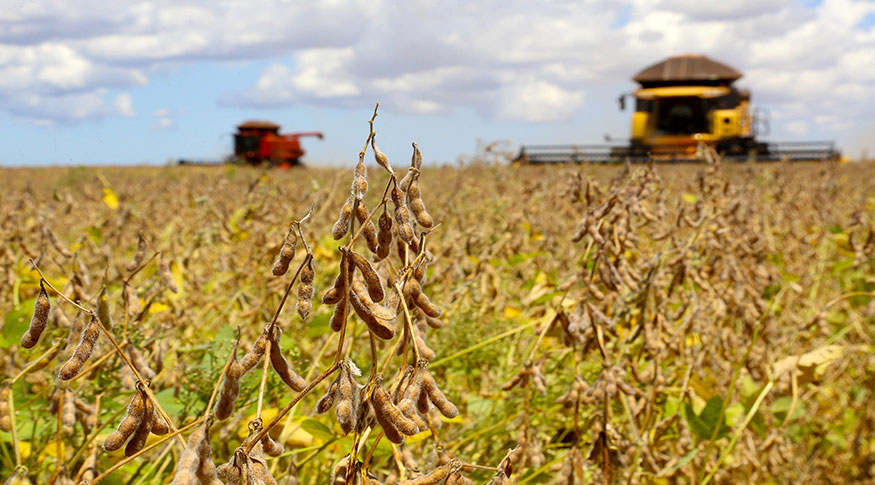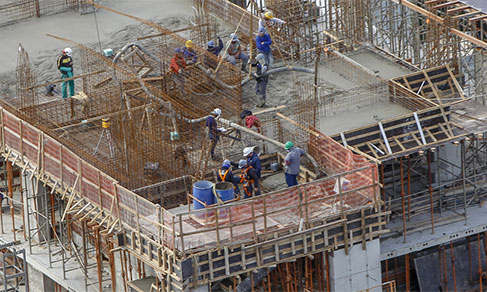Agricutural production
Second estimate anticipates ecord in 2021grain crop
December 10, 2020 09h00 AM | Last Updated: December 10, 2020 12h28 PM

The Brazilian harvest of grains, cereals and legumes should reach 256.8 million metric tons in 2021, according to the second forecast of the Systematic Survey of Agricultural Production (LSPA), released today (10) by IBGE. This is a new record in the historical series started in 1975 and represents a growth of 1.9% in relation to the estimates of 2020, of 252 million metric tons.
The record is mainly due to increases of 6.3 million metric tons (5.1%) in soybean production and 870.1 thousand metric tons (3.3%) in the 1st corn crop. “Next year, we are expecting a record production of soybeans. Prices are very good and producers are likely to expand the planting area”, says IBGE's Agricultural Analyst, Carlos Barradas.
“In 2020, we had a record soybean crop, despite the drop in production due to bad weather conditions, which took us over seven million metric tons. In 2021, we expect to produce 127 million metric tons of soybeans mainly due to the increase in the planted area and the favorable weather forecast, despite some news of lack of rain in the South”, says the researcher.
The IBGE estimates that, in 2021, there will be declines in the production of the corn 2nd crop (-2.4%), rice (-1.8%), upland cottonseed (-13.6%), beans 1st crop (-0.3%), beans 2nd crop (-7.0%) and beans 3rd crop (-5.4%).
“For rice, we expect a production of 10.9 million metric tons, an increase of 0.6% in relation to the first forecast. However, it is a decline of 1.8% compared to 2020. This quantity of rice meets domestic demand and there will probably be no need to import rice”, he explains.
The forecast for the production of beans for 2021, according to Mr. Barradas, indicates that the quantity produced may not be enough to meet the needs of the domestic market. "Brazil consumes about three million metric tons of beans and the forecast estimates production at 2.8 million metric tons, which means that the country may need to import beans, unless that production increases in 2021", he says, stressing that the harvest is surveyed on a monthly basis, and values change, according to the weather and the market situations.
The estimate is that, also next year, the area to be harvested will increase for soybeans (1.8%), for corn 1st crop (1.9%) and for corn 2nd crop (2.4 %). Negative changes are expected in areas of upland cottonseed (-9.1%), paddy rice (-0.8%), beans 1st crop (-0.8%), beans 2nd crop (- 2.0%) and beans 3rd crop (-4.1%).
This second estimate made by the IBGE for the crops to be harvested in 2021 is subject to changes in the next forecast, in January, as well as in the monitoring of the harvests, throughout 2021.
November estimate for 2020 crop is 4.4% higher than that of 2019
Another point addressed in the survey was the fact that November estimate for the 2020 harvest, which is expected to reach 252 million metric tons, is 4.4% higher than that estimated in 2019 (241.5 million metric tons). In comparison with the estimate released in the previous month, there was an increase of 65.6 thousand metric tons (0.0%).
Regarding the area to be harvested, the estimate is 65.3 million hectares, an increase of 2.1 million hectares (3.3%) compared to the area harvested in 2019. The three main products of the cereal, legumes and oilseeds are rice, corn and soybeans, which, together, represent 92.7% of the production estimate and account for 87.1% of the area to be harvested.
In comparison with the production of the previous year, there were increases of 7.1% for soybeans, 7.8% for rice and 0.4% for corn (growth of 2.3% in corn 1st crop and decrease of 0.3% in corn 2nd crop). As for upland cotton, production was higher by 200.7 thousand metric tons (2.9%).
Central-West accounts for 47.5% of national grain production
Mato Grosso continues as the largest national grain producer, with a 28.9% share, followed by Paraná (16.0%), Rio Grande do Sul (10.5%), Goiás (10.3%), Mato Grosso do Sul (8.0%) and Minas Gerais (6.2%). Altogether, the six states together, represented 79.9% of the national total.
Regarding the participation of the Major Regions, the Central-West leads with 47.5% of the total, followed by the South (29.0%), Southeast (10.1%), Northeast (9.0%) and North ( 4.4%).




















